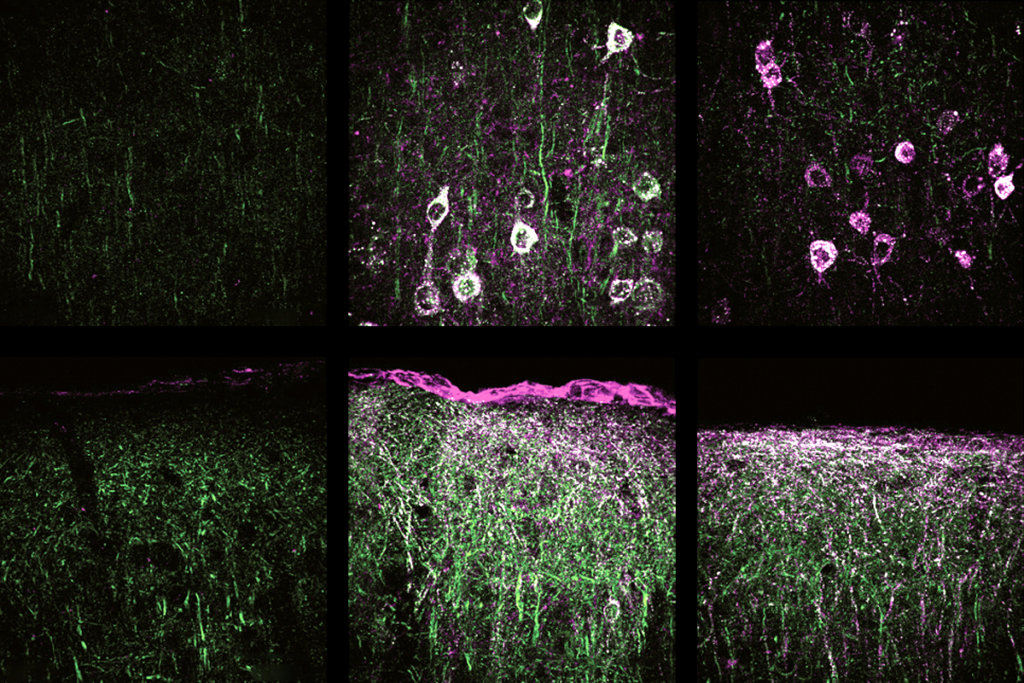‘Tomato’ red molecule reports on neuronal activity
A pH-sensitive red fluorescent molecule allows researchers to simultaneously monitor two different types of neuronal activity, according to a study published 27 May in Nature Neuroscience.
A pH-sensitive red fluorescent molecule allows researchers to simultaneously monitor two different types of neuronal activity, according to a study published 27 May in Nature Neuroscience1.
A number of molecules fluoresce in response to chemical changes that reflect cellular activities, such as changes in calcium levels after neurons fire. By genetically engineering these molecules into cellular DNA, researchers can study subpopulations of neurons.
Existing indicators of neuronal activity are all derivatives of the green fluorescent protein (GFP), meaning that they look the same under a microscope and so cannot discriminate between simultaneous cellular activities.
In the new study, researchers engineered a new molecule, dubbed pHTomato, that emits light in the red spectrum and does not overlap with GFP. The molecule is pH-sensitive, emitting more fluorescence in a neutral environment than in an acidic one.
The researchers fused pHTomato to another protein, called VAMP2, which bridges the membranes of sacs containing chemical messengers. When neurons fire and release the contents of these sacs, pHTomato is exposed to the neutral pH outside of cells and fluoresces.
The researchers then looked at populations of cells expressing both the pHTomato/VAMP2 fusion protein and a GFP indicator that lights up at the signal-receiving ends of activated neurons. Yellow spots, which result when the red and green colors overlap, indicate active synapses.
The researchers also expressed pHTomato in neurons that make a variant of a light-sensitive membrane protein called channel-rhodopsin (ChR) that responds to green light. A technique called optogenetics enables researchers to manipulate neuronal signaling by activating ChRs with beams of light.
Rays of green light simultaneously activate neuronal signals and excite pHTomato to release red fluorescence. Using green light, researchers can change neuronal activity and immediately see the effects.
References:
1: Li Y. and R.W. Tsien Nat. Neurosci. Epub ahead of print (2012) PubMed
Recommended reading

Autism scientists push back on CDC’s inaccurate vaccine claims

Gene replacement therapy normalizes some traits in SYNGAP1 model mice
Explore more from The Transmitter

Neurophysiology data-sharing system faces funding cliff

